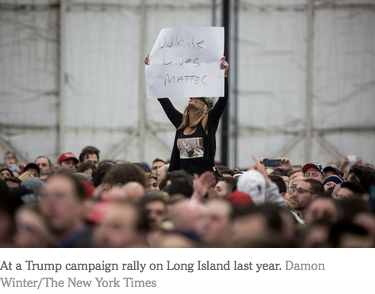Nationality, race and ethnicity are a large part of identity for most people. Factors like this matter more for some people than others — and for some groups more than others — but a sense of group awareness or membership exists in varying degrees across all segments of American society.
Often it’s easy to see the signifiers of such group identity, in distinctive music, food or clothing, for example. But sometimes when symbols or language are co-opted, it is harder to spot. In 2015, Donald J. Trump’s “make America great again” and “build a wall” started out as simple but powerful slogans. As time went on, they became more infused with a specific meaning that symbolized the concerns and preferences of a substantial set of white Americans.
Mr. Trump’s appeals were a form of group politics or identity politics, and he continues to focus on threats to white identity as president.
Some Trump critics find his focus on whites as a group outrageous or counterproductive. But survey data suggest that many white Americans do feel threatened, and that they think there are policies that discriminate against them and should be changed.
Two examples of the president’s efforts and the underlying support for his positions illustrate these trends.




